Plug and play
Electric aircraft are in our future

It’s hard to overstate the benefits of electric propulsion. The electric motor has one moving part; the time to replacement (in lieu of overhaul) is considerably longer; and electric motors are cheaper to buy, cheaper to operate, easier to operate, lighter, require less maintenance, run quieter, and don’t have the power pulses that put strain on airframes and propellers. The one downside—and it’s a big one—is energy. Where do you find the energy to run the motor? The power density of fossil fuels is hard to beat.
With claims of Jetsons-like flying electric cars in the next five years and hybrid airliners soon after, it’s easy to be skeptical about the development of electric propulsion. Clearly, big claims like that are meant to promote excitement and spur investment, and shouldn’t be taken as true progress reports.
Yet real progress is happening. In Europe, Pipistrel’s Alpha Electro two-seat electric trainer has been certified and is flying. A program in California brought Pipistrels to the United States as part of a flight training test site, although training has to wait until the rules for certification change to allow electric propulsion in the Light Sport category. The Bye Aerospace Sun Flyer is years ahead of the competition among current development programs, and shows promise at making it through certification.
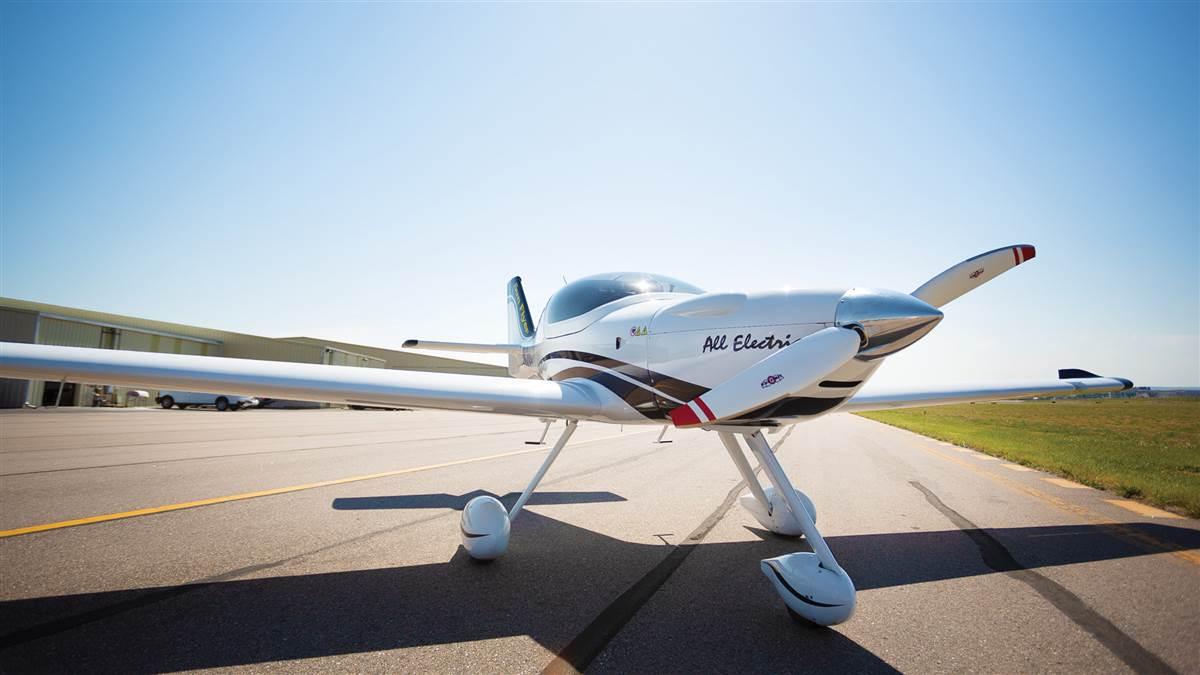 The Sun Flyer is a two-seat, 1,900-pound-gross weight, all-electric aircraft aimed at the training market. It’s the first project for the certified market from Bye Aerospace, which has previously found success making unmanned aircraft systems for military applications.
The Sun Flyer is a two-seat, 1,900-pound-gross weight, all-electric aircraft aimed at the training market. It’s the first project for the certified market from Bye Aerospace, which has previously found success making unmanned aircraft systems for military applications.
The Sun Flyer is meant to change the cost of learning to fly. Bye Aerospace promotes a total operating cost of $14 an hour, compared to more than $75 an hour for a Cessna 172. With the airplane projected to cost between $200,000 and $300,000, some simple math shows that training in an electric aircraft could chop the cost of learning to fly by as much as 50 percent, opening aviation up to tens of thousands more people.
Propulsion comes from a 90-kilowatt Siemens motor, equivalent to about 115 horsepower. This will result in roughly the same power-to-weight ratio as the Cessna 152. Seimens has quickly become the electric propulsion leader in development programs. The Sun Flyer’s motor is one of many projects the company is working on, with power applications ranging from 30 kilowatts (40 horsepower) to more than a megawatt. The motor Siemens developed for Extra Aircraft’s technology demonstrator had a 5:1 power-to-weight ratio, something piston engines can’t touch. And Siemens’ SP70D, to be used on the Sun Flyer, weighs only 26 kilograms (57 pounds).
Then there’s the batteries. Whereas the weight of fuel is an ever-changing variable that gives pilots an infinite range of potential loading options, battery weight is fixed. And the batteries will be heavy. Bye Aerospace is quoting 10 packs totaling 880 pounds. Thanks to lightweight construction materials, Bye is saying to expect a “crew weight” of 440 pounds. Even with such a light motor, the batteries will be dispersed both in the cowling and behind the cabin, indicating that their weight is a primary design consideration.
Relative newcomer EP Systems is providing the battery packs for the Sun Flyer. Part of what gave Bye Aerospace confidence to go with the California-based start-up was its work with NASA’s X–57 project, an all-electric test aircraft. It takes a Tecnam P2006T, strips the engines, and bolts on a new wing and a host of electric motors. EP Systems is the battery pack provider, and the batteries the company is providing to the Sun Flyer are similar.
Aside from weight, fire safety is a major consideration of carrying around hundreds of pounds of batteries. Teslas seem to be spontaneously combusting on the road, Boeing had fires on the 787, and earlier this year a Magnus eFusion electric aircraft crashed in Hungary with news reports saying fire may have been a cause.
Bye Aerospace CEO George Bye said the safety protocol around the batteries is threefold. First, you design a robust monitoring system. Then you incorporate a battery management unit that can isolate any problems—and finally, you build in physical containment. NASA said its tests of EP Systems’ batteries showed the fire mitigation system worked well enough to prevent and contain any potential fires, a key point in the battery testing process.
Pipistrel claims a 1.5-hour endurance on the Alpha Electro. Bye is claiming an endurance of more than three hours, and says that number is today’s reality with no technological leap or improvement required. “It’s not magic,” he said. The Sun Flyer’s current batteries are 260 watt-hours per kilogram, a number some speculate to be roughly equivalent to the latest batteries on a Tesla. Strung together, the packs produce 92 kilowatt-hours of energy, 73 kwh of which is usable when you factor in VFR reserves and other buckets we shouldn’t plan to dip into. That’s enough energy to run an average American home for more than two days. With battery technology improving at an average of 5 to 8 percent every year, it’s not hard to imagine a future where electric aircraft get well beyond the training market and enter the world of GA utility.
Bob Hepp, the owner of Aviation Adventures in northern Virginia and one of the first Sun Flyer position holders, is interested in how the Sun Flyer will help his flight school. Hepp paid a deposit of $10,000 each for his two Sun Flyers, a not insignificant amount for a private flight school. “I’ve been watching electric for a long time, knowing the issues with 100LL,” he said. “Ten years after Sun Flyer makes it to market there will be a dividing line between those that have electric airplanes and those that don’t. And those that don’t will be driven into bankruptcy because of the economics.”
Much of Hepp’s interest in electric is practical. Siemens isn’t releasing the motor replacement time yet, but 10,000 hours is emerging as an industry standard. Charging the airplane will cost significantly less than fueling it, with little to no impact on operations, and then there’s the maintenance benefits. “I never realized how much I hated oil,” Hepp said. With a large fleet of airplanes, at least one always seems to be undergoing an oil change. It’s expensive, messy, time consuming, and laborious. “I can’t wait to never have to deal with oil again.”
Electric propulsion is at a pivotal point. We don’t all have to get on the eVTOL bandwagon just yet, but electric trainers, electric family haulers, and electric aerobats are coming, and they represent a major change in how we will learn to fly, operate, and maintain airplanes.
Hepp said the manager of his local FBO told him he wants to be his first student when he gets a Sun Flyer. “And this is the guy who sells me my fuel.”
Email [email protected]
Dogfight
Are electric aircraft a viable part of general aviation’s future?
I want to believe
The innovation we’ve been waiting for
By Sarah Deener
I plugged my car in at the airport recently and noticed an AOPA sticker on the car next to mine. It was AOPA Editor in Chief Tom Haines’ plug-in hybrid, charging while he took a commercial flight to Wichita. Had our appetite for engine innovation, unsated in our flying lives, found an outlet elsewhere?
Hybrid vehicles have become commonplace on the roads in the past two decades, and as charging stations proliferate, plug-in hybrids and all-electric vehicles are becoming a fact of life. Now, electric aircraft are nearing their time.
What about battery weight? Endurance? The technological challenges are clear, and electric aircraft propulsion has significant drawbacks. But may I remind you of the compromises most of us already make? Engines that don’t want to start if they’re too hot—or too cold. Spark plugs that foul. We fly with powerplants designed close to 70 years ago (see “Savvy Maintenance: Time Capsule,” p. 92); the rest of the world has moved on. Mention a bad magneto to my husband, and he’ll assume you’re an X-Men fan.
Every aircraft design makes compromises. Many of us who fly mostly short hops with one or two people will gladly give up some range for fewer moving parts, lower operating costs, and freedom from anxiety over the price and availability of avgas.
Electric aircraft won’t be for everyone. But the fact that we’re not all flying with jet engines or airframe parachutes doesn’t mean those aren’t lasting innovations. Electric propulsion may find its niche in the regulatory environment of Europe, in noise-sensitive areas, and in flight training and recreational flying. And, as with cars, it’s likely hybrids will bridge the gap between the advantages of piston engines and electric motors. Don’t count out this technology because it can’t be all things to all people.
Aviation has seen a lot of big ideas come and go. But before you file “electric aviation” in the annals of history just after the Aerocar, consider the powers beyond aviation pushing for innovation. Everyone from regulators to car and cellphone manufacturers has an interest in battery advances, and today’s technology holds promise.
My plug-in hybrid vehicle isn’t perfect, but I stop for gas so infrequently I couldn’t tell you how much it costs today. Imagine taxiing up to the charging station at your favorite airport restaurant and “filling up” for less than the cost of your meal. Now that’s something I can look forward to.
Email [email protected]
Hot air
Believe it when you see it
By Thomas A. Horne
Here we go again. Seems like every dozen years or so a shiny new thing pops up, begging to save general aviation from certain doom. First it was ultralights, then LSAs—and now it’s electrically powered entry-level airplanes. Then, as now, it’s important to keep our cool and take a close look at the shortcomings behind the promises.
Electric power faces several big challenges—such as fire. Today’s state-of-the-art lithium-ion batteries will catch fire if their internal cells are exposed to air. Yes, these batteries are becoming more energy-dense, lighter, longer-lasting, and quicker to charge. But crash impacts that breach their protective cases nearly always cause fires. Ask Tesla, whose cars have caught fire after their batteries have been damaged.
Even small lithium-ion batteries can raise havoc. After several fires aboard airliners caused by lithium-ion batteries, ICAO banned bulk shipments aboard airliners in 2016. One was the fatal crash of a UPS cargo flight, caused by a smoky cockpit fire that incapacitated the crew. The Boeing 787 Dreamliner fleet was once grounded because of safety concerns about its lithium-ion batteries. To this day, spare lithium-ion AA batteries must fly as carry-on baggage because of risks associated with jostling or movement in cargo holds; electronics with internal lithium-ion batteries can be checked or brought aboard as carry-ons. In these cases, the airplanes were already certified. How can we expect a new generation of lithium-ion-powered aircraft to be certified, if the goal is safety standards equal or better than those currently in use?
Plenty of other challenges await an all-electric future. I once asked Pipistrel chief engineer Tine Tomazic when we could expect an all-electric, 120-knot four-seater to fly nonstop for 700 nautical miles. In other words, performance roughly equal to that of a Cessna 172. “For that, we’d need a whole new generation of semiconductors,” he said.
For now, the best way to approach electric flight is to pair an electrical propulsion unit with a Rotax-style internal combustion engine. This is the track Pipistrel is following with its sleek Panthera hybrid. Even so, we’d have the risk of lithium-ion battery fires—unless battery safety is improved, or a better design emerges.
Don’t get me wrong. I’m all for general aviation having a safe, practical, certified all-electric future. But it will probably take longer than the five years currently being promised. In the meantime, we’ll have to be satisfied with the reams of artists’ renditions—some of which resemble the Precambrian creatures in Stephen Jay Gould’s Wonderful Life. But that’s just me. AOPA
Email [email protected]
Reality or vaporware?
A look at current electric projects
Any major leap in technology is going to take some suspension of currently held beliefs of what’s possible. It’s good that the visionaries don’t listen to the naysayers and all the others that try to hold them back. But it’s fun to try anyway.
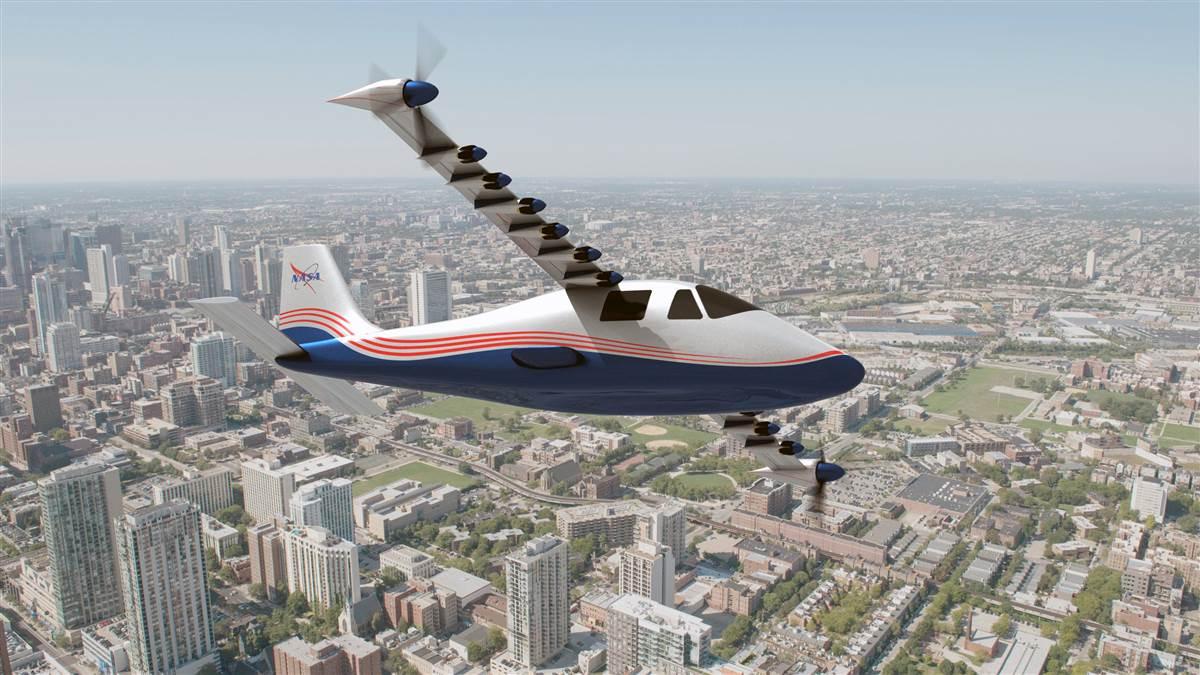 NASA X–57 Maxwell
NASA X–57 Maxwell
With this technology demonstrator and research test vehicle, the X–57 team is taking the unusual step of mounting 14 leading-edge motors, some of which will be engaged only for takeoff.
Reality. This is NASA. If it can land us on the moon, it can make electric motors break the surly bonds.
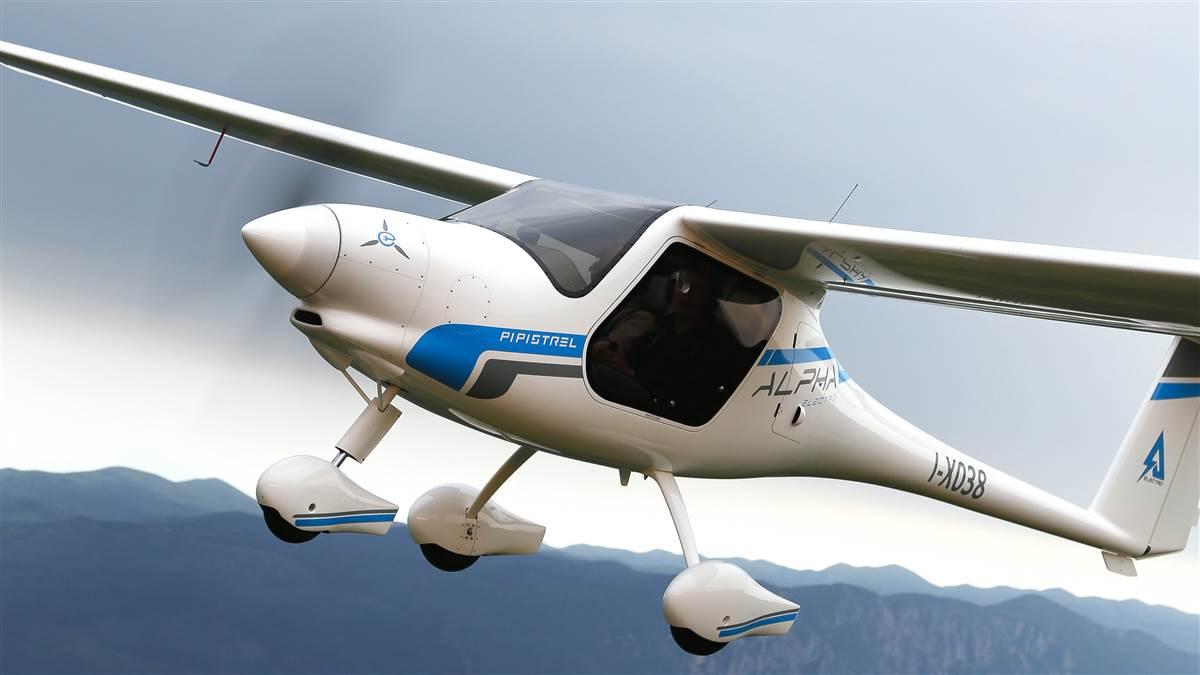 Pipistrel Alpha Electro
Pipistrel Alpha Electro
Slovenia’s Pipistrel fights well above its engineering weight, and the clever Alpha Electro is a Light Sport wonder. Expect big things from this early electric adopter.
Reality. You can buy one today, although the FAA may not let you fly it here.
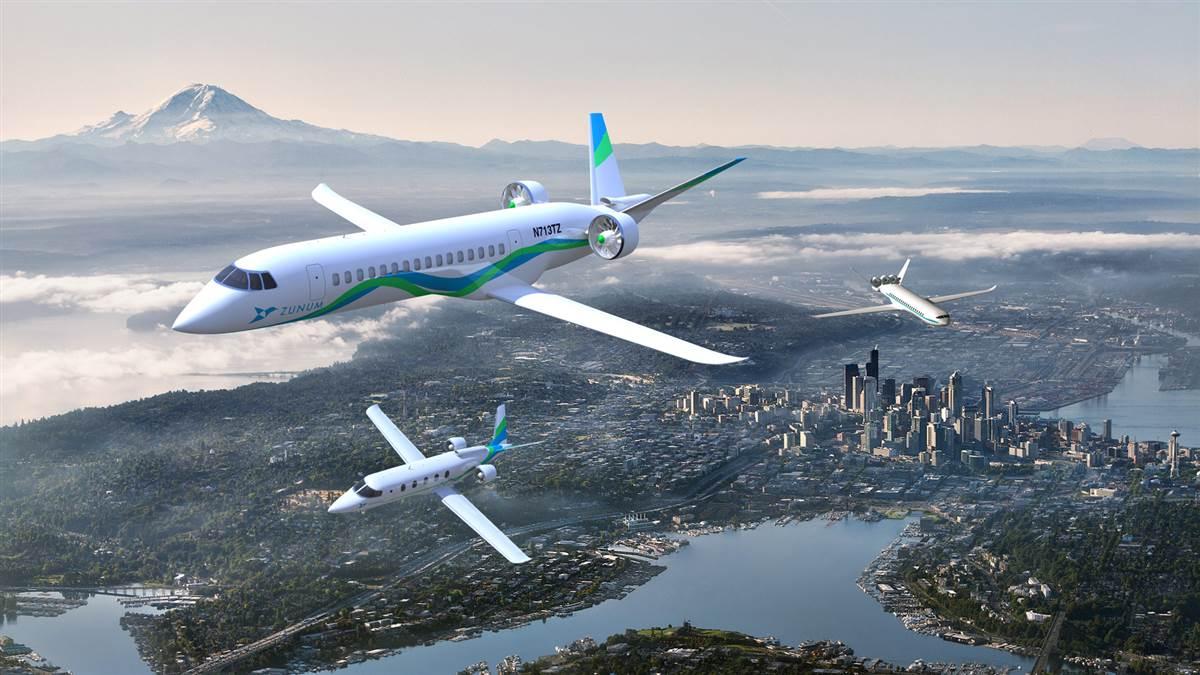 Zunum Aero
Zunum Aero
It’s hard to pin down one model, because before flying a demonstrator this Boeing-backed company announced a family of hybrid electric aircraft that will take dozens of passengers hundreds of miles by 2022.
Vaporware. This might happen—someday. But it’s not going to happen by 2022. There are simply too many technological and regulatory hurdles to overcome.
 E-Fan X
E-Fan X
A partnership between Airbus, Rolls-Royce, and Siemens, the E-Fan X aims to replace the turbine engines on a BAe 146 with two-megawatt electric motors, powered by a gas turbine hybrid system.
Tossup. These are the companies with the chops to make a project like this happen, and Siemens is already halfway there on power. Hybrid is also a sensible way to go. If the project doesn’t succeed, it will be from lack of commitment.
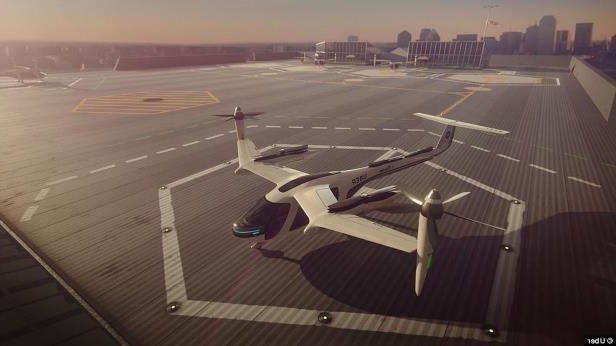 uberAIR
uberAIR
This isn’t a singular vehicle so much as a concept. Imagine hundreds of electric vertical takeoff and landing aircraft operating from the rooftops of buildings in cities all over the world. Passengers will pay just $20 or $30 to hop across town, as the crow flies, in the comfort of a pilotless aircraft.
Vaporware. Where to start? The technology is years away, the acceptance of unmanned is decades away, and New Yorkers being OK with hundreds of aircraft directly overhead at one time? Probably never.



